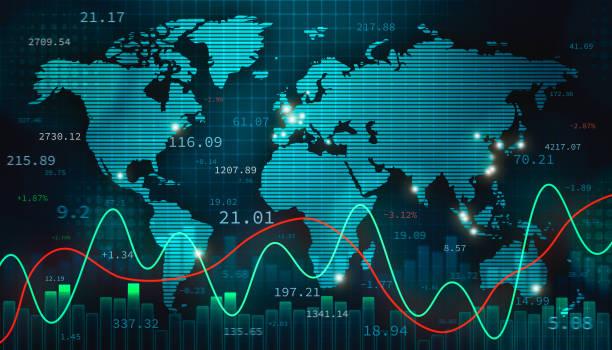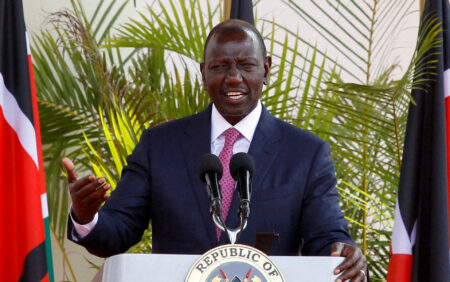The global economy, which had just come out of the COVID-induced recession and had begun to recover from a two-year slump, found itself again in the grips of an inflation storm from supply chain disruptions.
When the world began to come to grips with the pandemic, the world’s leading economies did not open up their borders simultaneously. Some, like China, have maintained strict lockdown restrictions in some of their cities.
- The global economy is still fragile from the effects of the COVID pandemic. It is now facing significant headwinds from geopolitical tensions and supply chain constraints.
- Interest rate hikes have been mooted by global central banks as a measure to mitigate resurgent and stubborn inflation.
- The inflation plaguing the global economy has its roots in three primary areas: stimulus packages from the world’s largest economies.
Other countries like the United States and the United Kingdom loosened their travel restrictions, and soon, the rest of the world followed suit. After a global economic slump of over two years, world economies needed a tonic to reinvigorate them.
Leaders of the world’s foremost nations took bold steps to stimulate their economies from the two-year lull.
UNCTAD: Africa doubled foreign direct investment in 2021
Governments and their central banks went back to the macroeconomics drawing board to influence aggregate demand. That age-old equation describes the economy through the interaction of four critical variables:
G+C+I+(X-M)
Where:
G is government expenditure.
C is total consumption in the economy by households and firms.
I is investment or real capital formation in the economy.
X is total exports, and M is total imports.
Keynesian economists reason that achieving economic growth and the desired rate of economic growth is possible by manipulating either one or a combination of these variables in the aggregate demand equation.
Immediately after it became apparent that the pandemic was behind us, the world’s leading governments intervened through the G variable of the equation. Government expenditure was seen by many countries to be the solution to the economic quagmire.
The leading governments of the world pulled money out of thin air and began to spend it like it was going out of fashion. Countries like the United States of America announced trillion-dollar stimulus packages to develop infrastructure. Multilateral financial institutions also came into the fray by disbursing funds to countries to help them to kick start their economies that had been inactive for the greater part of two years.
- The second source of inflation wreaking havoc comes from supply chain constraints which emanate from the fact the world did not open up its borders at the same time, and hence the flow of goods from where they are produced to where they are needed has been severely interrupted leading to demand-pull inflation.
- Geopolitical tensions, most notably the invasion of Ukraine by Russia, has led to unsustainable jumps in the price of energy like oil, coal, and gas, which Europe and the rest of the world are significantly dependent on. The net effect of this has been inflationary.
- The United States dollar has been strengthening lately from investors looking to gain exposure to US$-denominated securities. This is macroeconomic development adds inflationary pressure to countries dependent on the US for their imports or use the United States dollar to import their goods.
Global investment flows: FDI back to pre-pandemic levels UNCTAD reports
Government expenditures Keynesian economists reason that when combined with the multiplier effect, will have the effect of lifting an economy that had slumped. This is conventional logic because a dollar introduced into the economy through government expenditure will not just be a single dollar as it cascades down the economy owing to the multiplier effect.
Taking the case of the US stimulus package that was implemented in 2021. The primary focus of the package was to build and develop new infrastructure; however, government expenditure on infrastructure would benefit the value chain beyond the infrastructure sector’s vicinity. Other sectors of the US economy would enjoy the benefit of increased economic activity resulting from the increased spending on infrastructure.
There are historical precedents to give credence and justify the use of government expenditure to resuscitate declining economies. The Marshall and Dawes Plans were, in a sense, economic stimulus packages designed to reconstruct Europe after the World Wars. Both plans ran into the billions, and the reconstruction which they financed led to the resurgence of the economic fortunes of European countries that had been erstwhile ravaged by war.
In 2009, the United States, in response to the Subprime mortgage crisis, instituted the Troubled Assets Relief Program, a US$ 700 billion stimulus package designed to keep the economy and the financial system afloat. Both examples of the stimulus packages recorded significant successes in the sense that they achieved the targets they had intended. Stimulus packages must not be viewed as magic wands, as it were.
- Interest rates have long been used as an instrument to manipulate economic activity and growth. However, their use in this instance will do little to calm the global economy because the inflation problem has origins beyond excess liquidity.
- Interest rate hikes will have little impact in mitigating inflation in the global economy presently. Increasing interest rates may lead to a recession and possible stagflation.
- Inflation in the global economy can only be extinguished by alternative sources of energy.
The most ideal scenario in which to implement economic stimulus is if the said stimulus package is financed by the country’s resources.
If it so happens that the said stimulus package is financed by increasing the money supply. It may have unintended and unpleasant consequences.
Economists have a phrase that means the same as “in a perfect world”. Economists will often say “ceteris paribus”. In a perfect world, government expenditure would have been all that is necessary to fix the lingering economic problems confronting the world post-COVID. However, reality would beg us to consider that government expenditures of money that they did not have to jump-start economies that were in a prolonged period of stasis would invariably lead to inflationary pressures. The United States has been grappling with the problem of inflation throughout 2021.
Its inflation figures are the highest they have been in decades. The fascinating thing about this current brand of inflation is that it is multi-faceted. Granted, it began when governments decided to spend their way out of an economic slump and introduced inflationary pressure on the global economy.
This new brand of inflation quickly took on a life of its own when it emerged that disruptions in supply chains the world over were creating bottlenecks that restricted the smooth flow of goods from where they were manufactured to the consumer. Firms were starting to experience difficulties in cost-effectively delivering goods and services. This cost they passed on to the consumer in the form of higher prices for goods and services. In other instances, there were reports of goods disappearing from shelves for prolonged periods of time.
The role of banks in enabling AfCFTA
The inflation currently obtaining in the world economy may have begun as “demand pull” another fancy concept economists use to describe when the price for goods and services rises because more and more people demand them and there just is not enough supply to meet the demand, to “cost-push” inflation which is yet another fancy term economists use to describe a phenomenon where the prices of goods and services increase because the cost of producing them rises. We can thank the cost-push nature of inflation, not only the supply chain disruptions and geopolitical tensions.
Whenever economic analysts mention the phrase geopolitical tensions, it is a euphemism for the war between Russia and Ukraine. This conflict has added a steroid boost to inflation because it has sent food and energy prices soaring, compounding the inflationary pressures globally.
The global economy is in the throes of a very bad case of stagflation. Again, a very fancy term economists use to describe an inflationary environment characterized by low economic growth. Bearing this in mind, it is frightening to see headlines where central banks are publicly mulling the idea of interest rate hikes. This is in reference to Jerome Powell, the chairman of the US Federal Reserve, who recently hinted that the current high-interest rate environment would persist for the foreseeable future. This is worrisome because leading global economies of the world have announced that their economies are in a recession.
A recession technically is defined as two consecutive quarters of negative economic growth. There is very little a high-interest rate environment will do to mitigate the high levels of inflation. The high-interest rates will be a blunt instrument and source of pain for households and firms.
If inflation were the result of excess money supply, it would be cooled easily by increasing interest rates by a basis point or two. However, this inflation has its origins in multiple sources meaning that a single intervention would not be sufficient to quell it. Central bankers and governments will need a comprehensive toolkit of measures to deal with this Hydra-like inflation that has many heads.
Tightening the money supply is necessary but will have a limited impact. More sustainable options will be to secure alternative supplies of energy and food supplies to counter the adverse impact of the continuing conflict between Russia and Ukraine.











